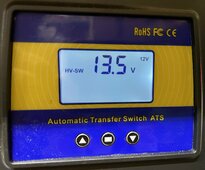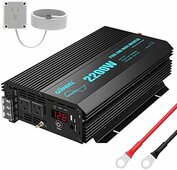JoeTalks...
New Member
- Joined
- May 17, 2022
- Messages
- 2
I am building a small battery backup system for my house using the system described on Will Prowse's page "2000 watt 24v Off-grid solar power system". My plan is to have this system so I can power some small freezers, etc. during a power outage. During times when we have power, I would like to use the system to power a few circuits in my house. Mainly lights, some small appliances, etc. My thoughts are to integrate the MOES automatic transfer switch by replacing two 20 amp breakers from my main power cabinet that currently feed the lighting circuits with one 40 amp breaker, then run the new 40 amp breaker output to the MOES switch as the grid supply. I am then going to run the output from the MOES switch into a small breaker panel and split it out into two 20 amp circuits to connect my original light circuits to. My question is how to integrate the inverter to the MOES switch. I ordered the Giandel 24v 2000 watt inverter, but now I am thinking I should have found an inverter with lug outputs instead of just the regular three pronged outlets. Is it possible to combine the two pronged outlets together via a buss bar so I can get them into one input to the MOES switch? I know they would have to be the same phase, but I can not find any documentation to show that they are in phase with each other.
Love the YouTube videos!
Joe
Love the YouTube videos!
Joe




